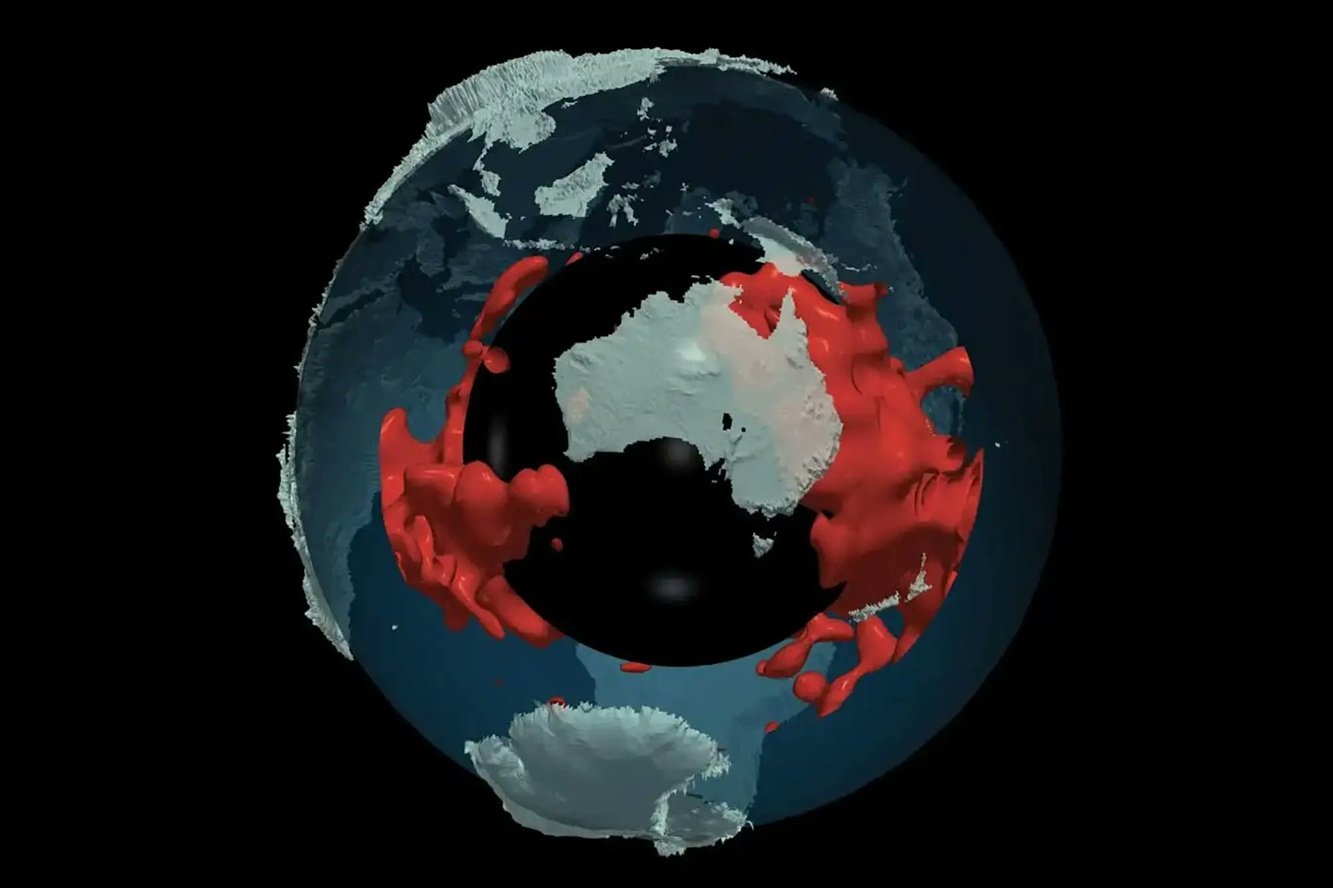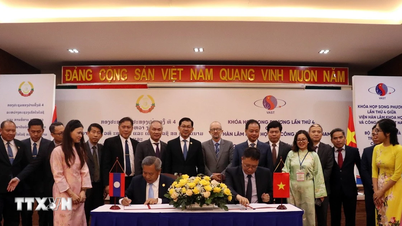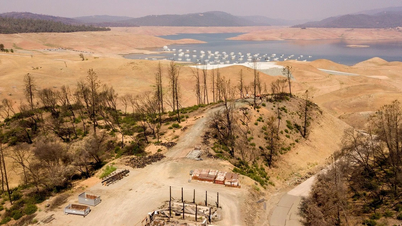(NLDO) - The Earth has two continent-like structures hidden deep inside, unbalancing the planet's "armor".
A study recently published in the scientific journal Scientific Reports has revealed more layers of mystery about two "underground continents" called LLSVP (large low-shear-velocity provinces), hidden inside the Earth.
LLSVPs are areas where seismic waves are abnormally slowed down as they pass through, with a mysterious origin.

The Earth has two structures resembling a 7th and 8th continent hidden in the deepest part of the mantle, marked in red - Photo: EGU
A research team led by Dr. James Panton from Cardiff University (UK) discovered that they can significantly affect the Earth's magnetosphere, the invisible "armor" that helps keep life safe from harmful cosmic rays.
According to this new research, two mysterious "underground continents" are constantly changing over time, causing significant changes in the magnetic field.
"Our mantle circulation models over the past billion years demonstrate that LLSVPs can develop naturally as a result of oceanic crust recycling," said Dr. Panton.
This is evidenced by the apparent change in the "underground continent" beneath the Pacific Ocean . Scientists believe that the raging geological activity of the Pacific Ring of Fire has continuously replenished the Earth's crustal material in this region.
In contrast, the African LLSVP, the "undersea continent" beneath Africa, remains virtually unchanged because it is not located below a subduction zone.
Subduction is a part of the process of plate tectonics, in which upper tectonic plates are pulled down into the Earth by pushing under other plates.
Tectonic plates can be understood as pieces of the Earth's crust. Our planet has a crust consisting of about 20 large and small pieces, constantly shifting, causing the shape of continents and oceans to constantly change over its 4.5 billion year history.
LLSVPs influence the outside world in return through the temperature difference between them and their surroundings, affecting how heat dissipates from the Earth's core, which in turn affects the convection in the core that creates the planet's magnetic field.
These hypotheses also refute the previous notion that these two "underground continents" have remained unchanged for billions of years.
The most popular hypothesis for their origin involves the planet Theia, a hypothetical planet the size of Mars, which is thought to have crashed into the early Earth 4.5 billion years ago.
After the collision, the early Earth's material and Theia blended into today's Earth, but there were still two large pieces of Theia that were not completely broken, buried underground and became the two LLSVPs mentioned above.
According to this hypothesis, materials from the two primitive planets were also shot into the air, forming a ring around the Earth and then gradually condensing into the Moon.
Source: https://nld.com.vn/vanh-dai-lua-thai-binh-duong-dang-nuoi-luc-dia-thu-7-196250306112915888.htm


![[Photo] Hanoi morning of October 1: Prolonged flooding, people wade to work](https://vphoto.vietnam.vn/thumb/1200x675/vietnam/resource/IMAGE/2025/10/1/189be28938e3493fa26b2938efa2059e)


![[Photo] Keep your warehouse safe in all situations](https://vphoto.vietnam.vn/thumb/1200x675/vietnam/resource/IMAGE/2025/10/1/3eb4eceafe68497989865e7faa4e4d0e)
![[Photo] President of the Cuban National Assembly visits President Ho Chi Minh's Mausoleum](https://vphoto.vietnam.vn/thumb/1200x675/vietnam/resource/IMAGE/2025/10/1/39f1142310fc4dae9e3de4fcc9ac2ed0)

















![[INFOGRAPHIC] DJI Osmo Nano Action camera, super compact, 4K 120fps recording](https://vphoto.vietnam.vn/thumb/402x226/vietnam/resource/IMAGE/2025/10/1/8408489112ee446dab897373255c827e)






































































Comment (0)